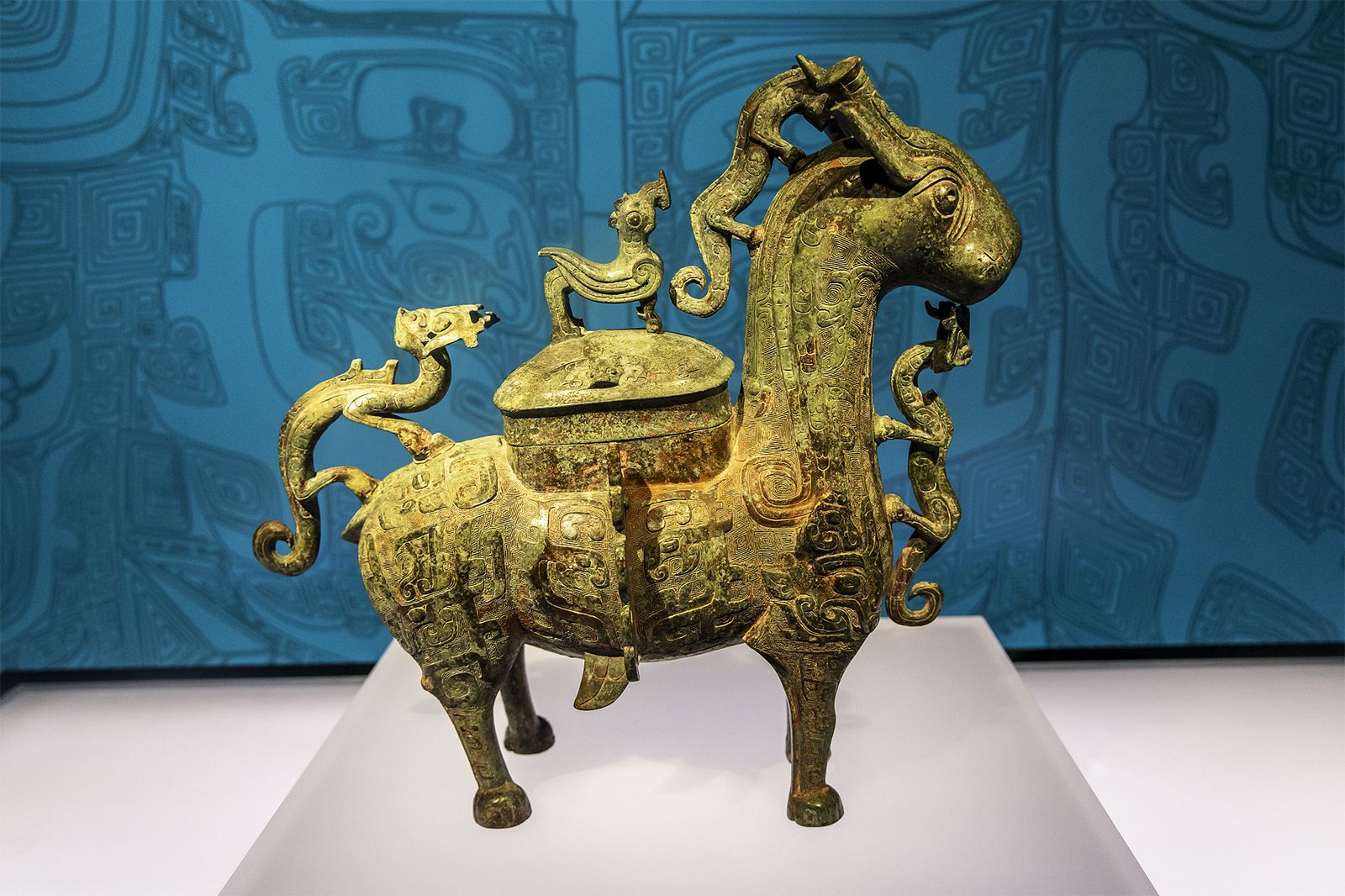
This bronze zun, a ritual wine vessel, has a body reminiscent of a foal and is adorned with a pair of horns and small wings on its belly. Its appearance and profound historical value enchant visitors to the China Archaeological Museum in Beijing.
The vessel represents the pinnacle of Western Zhou Dynasty (1046 BC – 771 BC) craftsmanship. It features a coiled-tailed tiger on top of its head, a phoenix on its back, and two coiled-tailed dragons on its chest and hip, with intricate and elaborate dragon, tiger, and spiral patterns adorning the entire vessel.

On its belly, there is a six-character inscription indicating that it was a type of dowry of the Deng State and was used during political marriages in the Western Zhou Dynasty period, making it a testament to the ritual and political practices of its time.

Source: https://reporteasia.com/cultura/tradicion/2024/07/02/zun-bronce-obra-maestra-artesania-antigua/


